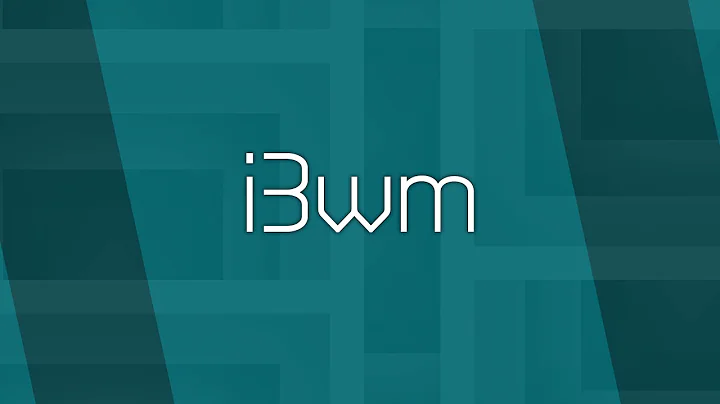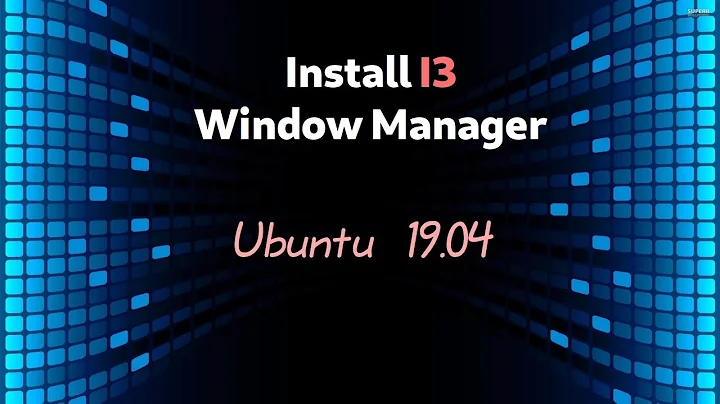Fresh install of Ubuntu with i3wm
Solution 1
To keep the system bloat to absolute minimum You can use Ubuntu MinimalCD. You can download it here:
https://help.ubuntu.com/community/Installation/MinimalCD
After installing only a base system (it requires an internet connection), issue the following commands to install i3 and xinit (it is required for startx to work) :
sudo apt install i3
And then
sudo apt install xinit
You can reboot now and after loggin in as user just run command:
startx
Enjoy Your minimal i3 ubuntu installation.
Solution 2
I also like to keep bloat to a minimum, and I personally prefer to start from a fresh Ubuntu Server install.
After installation, add the i3 PPA, and then execute:
sudo apt install i3
Wanting to have a fall-back environment, one could consider to install for example Xfce (just the core package), that would still keep bloat to a minimum:
sudo apt install xfce4
Note: This will not include a login manager. It may be seen as an advantage for people preferring to start from CLI
Solution 3
I've been using i3wm for the past few days on Kubuntu 14.04.1 LTS (Ubuntu derivative), and it's a bit different of an experience.
Since Ubuntu uses the LightDM Display Manager, you can install i3wm and give it a try alongside your current window manager.
Just install the proper packages using the following in your shell:
sudo apt-get install i3
Note that Ubuntu uses an older version of i3, due to the process that Ubuntu uses to upstream new packages to their repositories. You can also follow the instructions found here from the i3wm site, to use the latest stable version.
Once you have i3 installed, just log out to your display manager which is what handles your login & starts your window manager. Click the window manager box & change it to i3, and login. You should now be in i3wm, and a prompt will come up to generate your configuration file & ask you which modifier key you want to use (Alt or Super).
Some basic keybinds to help you with your first usage:
Mod+Enter # Starts a terminal session
Mod+d # Brings up dmenu, which finds commands from your $PATH
Mod+Shift+e # Prompt to exit i3wm
Your config file will be in .i3/config, and has a list of all keybindings. It's quite configurable, I have mine set so that mod+b brings up my web browser, and mod+m brings up steam. I also bound my windows switching directional keys to hjkl rather than jkl;to match vim keybindings that I use in every other program that I can use them in, and just rebound horizontal split to mod+shift+v.
You can also add things to your .i3/config that you want to run at startup, by using exec on it's own without a preceding bindsym. For example, I put this line in my .i3/config to change my background:
exec_always --no-startup-id feh --bg-scale ~/pictures/Backgrounds/background01.jpg
I also added in some others, like exec --no-startup-id volumeicon and exec --no-startup-id nm-applet for tray icons, for an ALSA volume icon & a network manager.
One thing that's a bit different is my updating process, I'm not running an update notifier so after I run updates via the command line, I run the following script to check whether or not the file /var/run/reboot-required exists:
#!/bin/bash
if [ -f /var/run/reboot-required ]; then
echo 'A system restart is required.'
fi
A thing I like about i3wm is that I'm starting to use the command line a lot more, and learning a lot along the way. I recommend keeping Unity as a fallback, just in case you decide to go back.
The User's Guide on the i3wm website is very helpful, and should help you in getting started with further configuration to your .i3/config.
Related videos on Youtube
b-m-f
Updated on September 18, 2022Comments
-
b-m-f almost 2 years
I would like to use the i3 Window Manager with Ubuntu and not Unity.
Since I am going to do a fresh install Id like to keep the bloat to a minimum.
Should I just install it normally with the Desktop version and remove Unity and compiz or install the Server version and then install X and i3?
Is it the same or are there any things I should be wary of?
-
b-m-f over 9 yearsIm using i3wm with ArchLinux already. My question is what the most elegant way of installing it on Ubuntu is. But thanks for all the effort :)
-
ixAp0c over 9 yearsDid you see the link in my post - for latest stable version? i3wm.org/docs/repositories.html This is what I used to install it, I found it the most elegant if by elegant you mean up-to-date & stable.
-
b-m-f over 9 yearsThe question is how to deal with Ubuntus bloat. Namely Unity and Compiz.
-
 Matt Molnar about 8 yearsNote if you skip xfce you'll still need xinit for i3. leetschau.github.io/blog/2014/05/04/191733
Matt Molnar about 8 yearsNote if you skip xfce you'll still need xinit for i3. leetschau.github.io/blog/2014/05/04/191733 -
dhchdhd almost 7 yearsToo easy. :D I remember in the bad old days of SVGA adapters, analog monitor bandwidth and Redhat (pre-sell-out) having to edit X display configs and when Ctrl-Alt-Backspace killed X by default. (Insert picture of nonexistent graybeard.)
-
 Admin about 6 yearsVery nice answer, this installation is fast and you get a fully working system that boots fast
Admin about 6 yearsVery nice answer, this installation is fast and you get a fully working system that boots fast -
b-m-f almost 6 yearsI have made this the accepted answer. Really the most basic with
xinitconsidered :) -
 Socowi over 5 yearsUp to this day, Ubuntu's mini image can only work with BIOS and not UEFI, see here. There seems to be a workaround for that, but you have do a little bit of tinkering.
Socowi over 5 yearsUp to this day, Ubuntu's mini image can only work with BIOS and not UEFI, see here. There seems to be a workaround for that, but you have do a little bit of tinkering.




